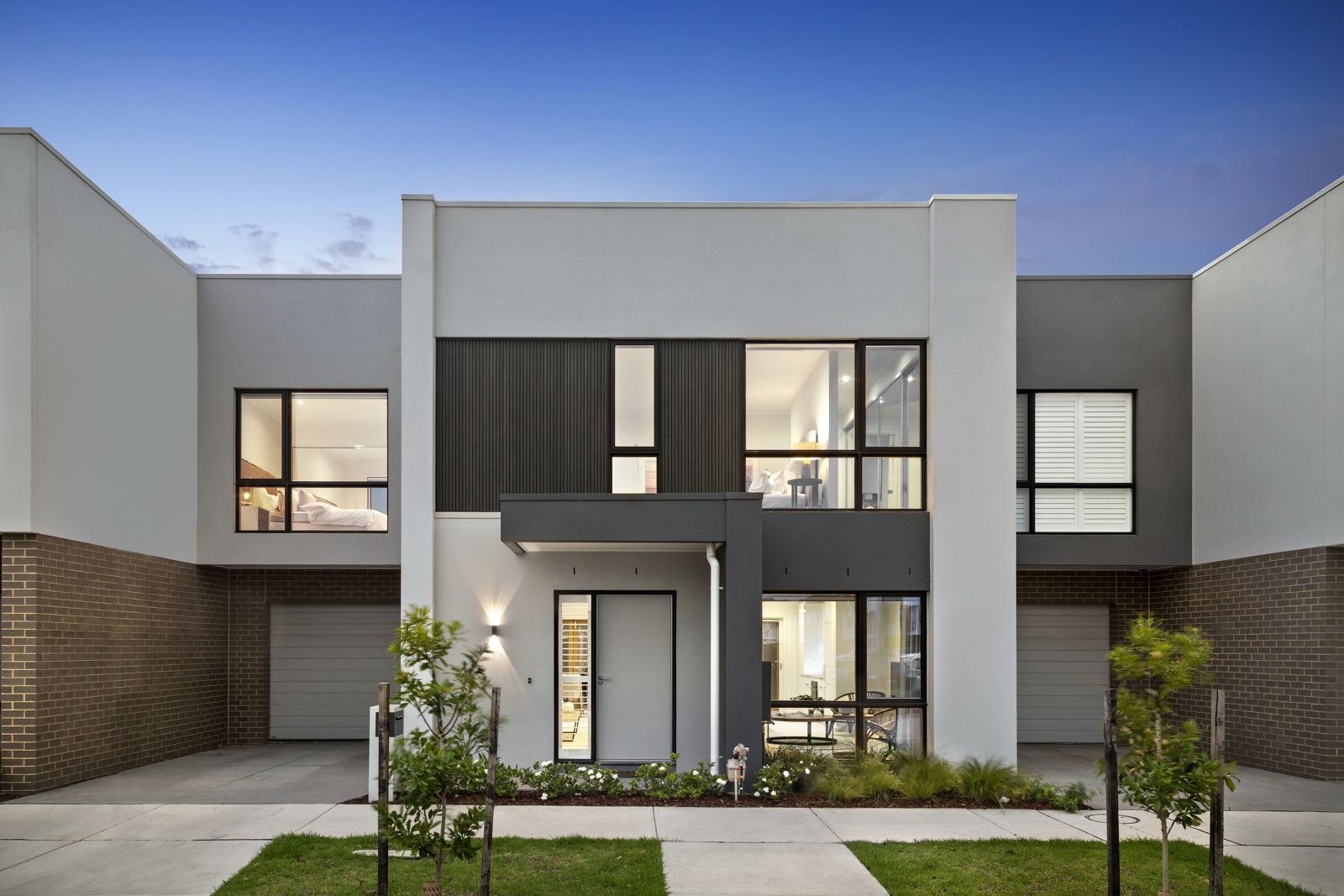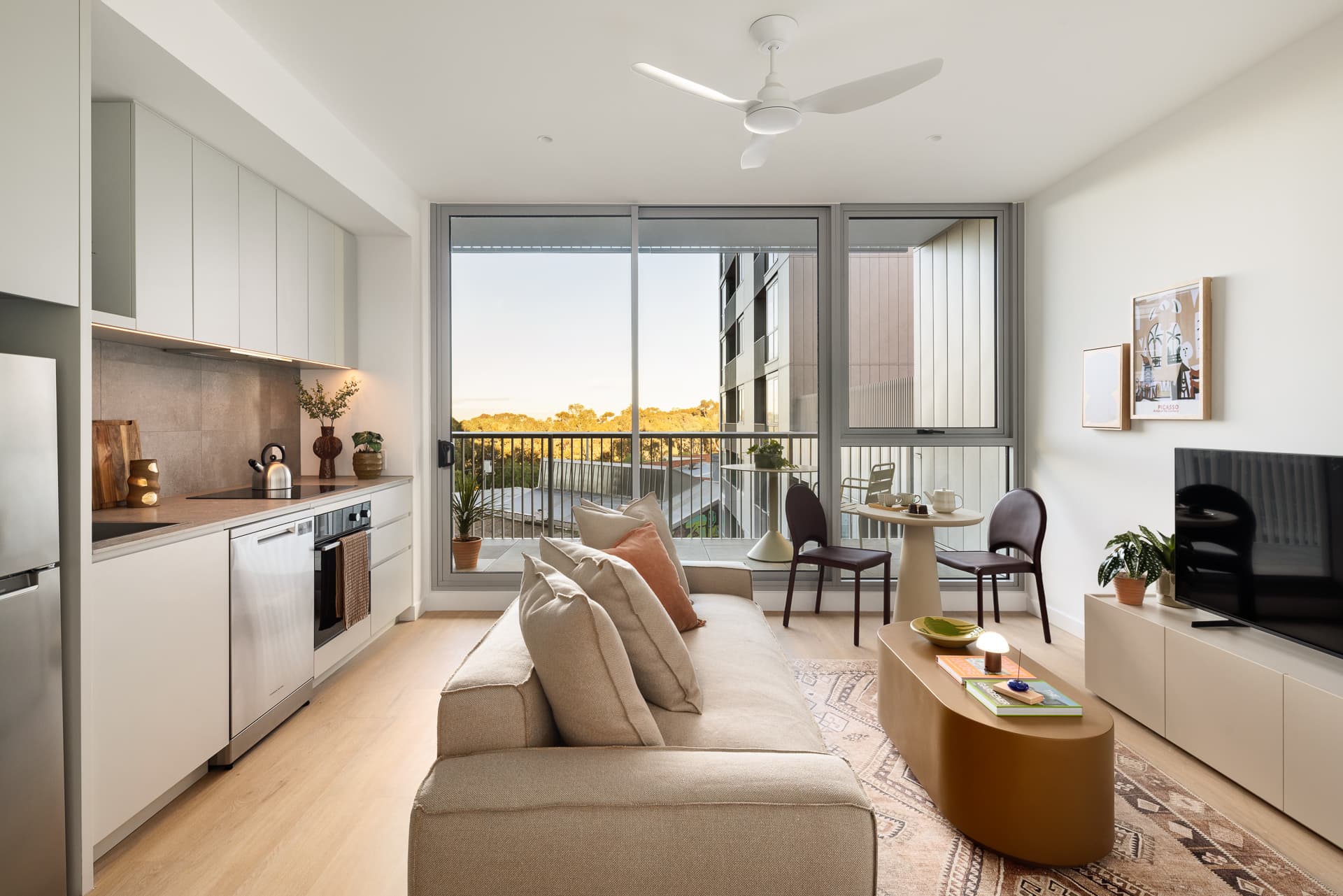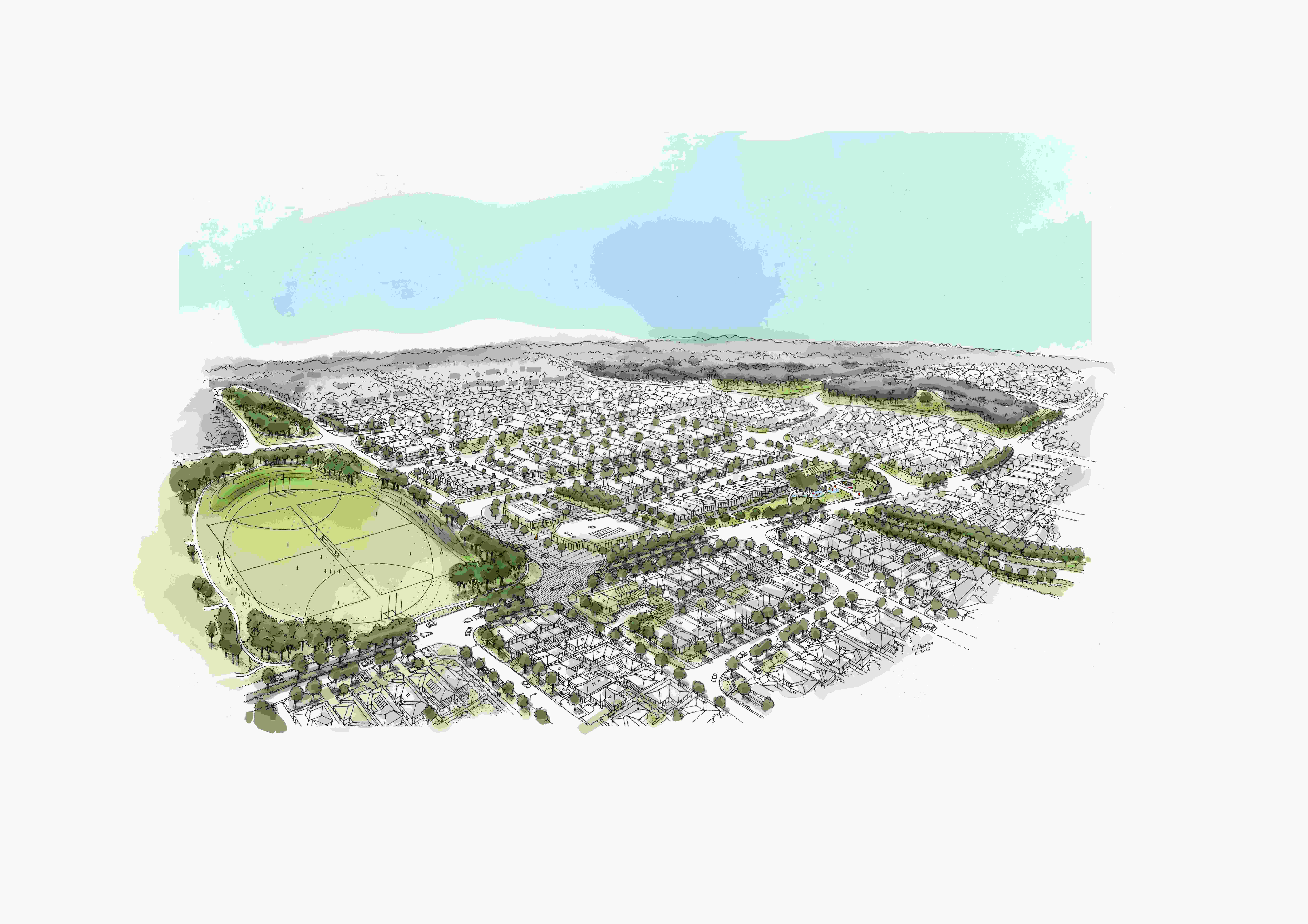The House with No Bills Study Delivers Big Savings
Mirvac cares about its customers and the planet, and with these two things in mind, launched its ‘House with No Bills’ (HWNB) study in 2018. Our ambition: to design and build more affordable and sustainable homes for Australians.
To do this, Mirvac selected a standard three-bedroom home at its Jack Road project in Cheltenham, Victoria, and then fitted it with upgrades, including increased insulation, glazing performance, LED lighting, energy-efficient appliances, and solar PV and batteries. Smart technology, such as lighting motion sensors and automated blind controls, were also installed.
Next, Mirvac selected a busy family of four – the Zimmermans – to live in the home, rent and bill free for 18 months, while learning to live more sustainably.
The results were impressive, with the Zimmerman family achieving 75 per cent energy cost savings (equal to approximately $2,000 a year) over the 12-month study period. The home also managed to operate on positive energy for five months of the year, and when compared to a typical home in the same area, used 92 per cent less energy. And although the HWNB didn’t achieve the zero bills that it set out to, Mirvac’s research partners in the study, Curtin University, found that with a few minor design and behavioural changes, it would be possible to eliminate energy bills entirely.
Importantly, the study identified learnings that Mirvac has applied to future pipeline projects, such as Iluma Private Estate in Perth, where we are running The Affordability Experiment, and The Fabric at Altona North in Melbourne.
Some of the key findings from the HWNB included:
Solar and batteries
Although one of the more costly features, the solar panels and batteries had the biggest impact on reducing costs within the HWNB (and were the Zimmermans’ favourite features due to their set-and-forget nature). And because the price of solar and batteries has reduced over the past few years, the payback period of a correctly-sized system has come down as well, making it more accessible for consumers.
Hot water reduction
One of the easiest ways to save money on energy, particularly in an all-electric home like the HWNB, is to reduce hot water consumption. This could mean choosing a cooler setting on your washing machine, using a low flow showerhead or taking shorter showers.
Metering
Unexpected energy consumption in the first few months of the study highlighted the value of energy monitoring apps to help understand and reduce energy usage and highlight appliances requiring services.
LED lighting
The HWNB used LED downlights, designed to achieve lower power per square metre. This meant that energy from lighting accounted for just 2 per cent of the total energy usage, compared to 7 per cent in a typical Australian home.
Electrical appliances
To save on the daily supply charges for natural gas, the HWNB used only electric appliances. This meant the Zimmermans weren’t burning fossil fuels in the house, which is safer, healthier and meant they were able to offset their energy consumption with the solar and batteries.
NEXT UP:
The Fabric at Altona North, Melbourne
With the help of funding from the Australian Renewable Energy Agency (ARENA), Mirvac is building homes at The Fabric at Altona North to the highest energy standards, which includes targeting all electric homes and a 7 star NatHERS rating for each home across the entire project. Within Stage 1, each home will include energy-efficient features, such as solar PV and battery systems, performance double glazing and LED lighting throughout. As well as being an exciting step for Mirvac in its sustainability journey, the feedback from our customers has demonstrated there is a growing demand for more sustainable living, to which Mirvac is well-positioned to respond.
The Affordability Experiment, Illuma Private Estate, Perth
In September last year, and having gained valuable insights from the House with No Bills, Mirvac launched its next study exploring how to make living more affordable and more sustainable for its customers. The experiment, which will run in partnership with Synergy, Keystart and TERRACE WA, sees one lucky family given the opportunity to live in an affordable and sustainable terrace home for a year. During this time, their utility consumption, spending and saving patterns, as well as lifestyle impacts, will be monitored to help gain an understanding of the cost savings that can be achieved by living in an energy-efficient home. The experiment will also see the chosen family trial a rent-to-buy scheme, with the rent they pay in their first year to go towards their initial home deposit.
Focus Area

Mirvac acknowledges Aboriginal and Torres Strait Islander peoples as the Traditional Owners of the lands and waters of Australia, and we offer our respect to their Elders past and present.
Artwork: ‘Reimagining Country’, created by Riki Salam (Mualgal, Kaurareg, Kuku Yalanji) of We are 27 Creative.







